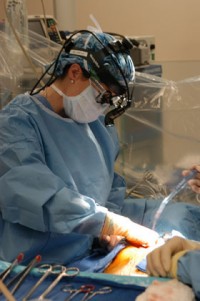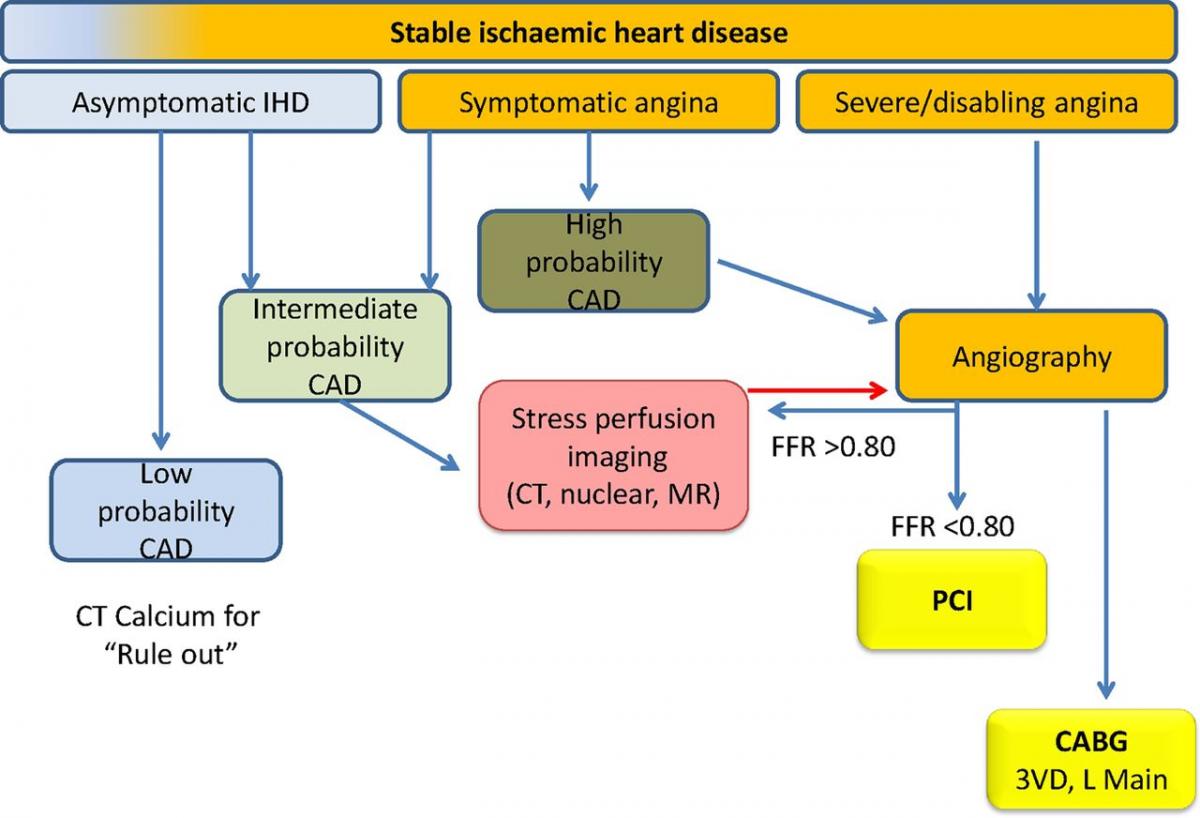Percutaneous Coronary Intervention Versus Coronary Artery Bypass Graft Surgery in the treatment for coronary artery disease
The medical literature and my own experience support this course of action if a procedure becomes necessary for the treatment of Coronary Artery Disease (CAD):
- In stable patients, optimal medical therapy should be the initial treatment of choice;
- If you have only one or two blockages (unless it includes a “Left Main Lesion”) and a good heart function , a Stent is usually the best option;
- If you have three or more blockages, a “Left Main”, damage to your heart, or are a Diabetic, you are usually better off with a CABG;
- There are important exceptions to these recommendations, but they should be dictated by your condition.
Unstable Angina Pectoris (UAP) is a dangerous condition caused by the presence of CAD, the result of Atherosclerosis and a number of other factors. Whatever the cause, the outcome is CAD with blockages in your arteries that critically reduce the flow of energy rich blood to some parts of your heart. Remember, your heart is the motor in your body; nothing else will work if your heart doesn’t.
UAP is usually associated with chest pains and/or other symptoms that can be very confusing. Patients cannot tell whether they are in the middle of heart attack or whether this is just a warning.
The first thing your doctors will try to do is stabilize your condition, determine whether there has been any damage and if so, minimize the extent of the injury and identify the parts of your heart that are not getting enough blood. This then leads to finding where and how many blockages you have in your arteries.
Cardiac Catherization is the standard procedure that determines what the road map is for fixing the blood supply (although CT Coronary Angiography (CTCA) may some day replace it as the quickest and simplest way). Once known, the blockages can be treated with two procedures, “Stents” (PCI) or bypass surgery (CABG).
Bypass surgery solves the issue by going around the area of obstruction, basically creating a new pathway, Stents are placed after stretching the blockages and improve the blood supply that way. A reasonable way to treat coronary artery disease has recently been proposed in the following algorithm (FFR stands for Fractional Flow Reserve, a tool that measures the amount of blood the passes through an obstruction):
There are important advantages associated with each procedure, but also equally important disadvantages. The reason this website was created in the first place is to put these issues in their proper perspective and to empower you, the patient, to make informed decisions about your own care.
People are interested in quick fixes and often forget that after the acute event what matters most is control and/or prevention of future illness. That’s why it is so important to remember that neither PCI nor CABG treat Atherosclerosis, the cause of CAD. However, of the two procedures, PCI is more like the quick fix, CABG the long distance runner.
Diet, exercise, medications and other life style modifications can slow down or stop this disease process. Don’t make the mistake of going back to your old habits like so many patients do, particularly after a successful intervention.
Cardiac Rehab requires supervision by doctors, nurses, physical therapists, dieticians and above all, a long term commitment from you, the patient. I believe strongly that while interventions such as PCI or CABG play an important role, for any long term impact it has to come from medical supervision, diet, exercise and a heart-healthy life style.
As a surgeon, I spent my career fixing patients in sometimes desperate situations and it was very frustrating to see my “successes” happily go back to their old ways once recovered. The role of doctors is no longer to stand by and observe, or to just do “procedures” as the primary action, but to help patients over the course of a lifetime. Health policies should reflect this because, ultimately, it is the cheapest solution!


